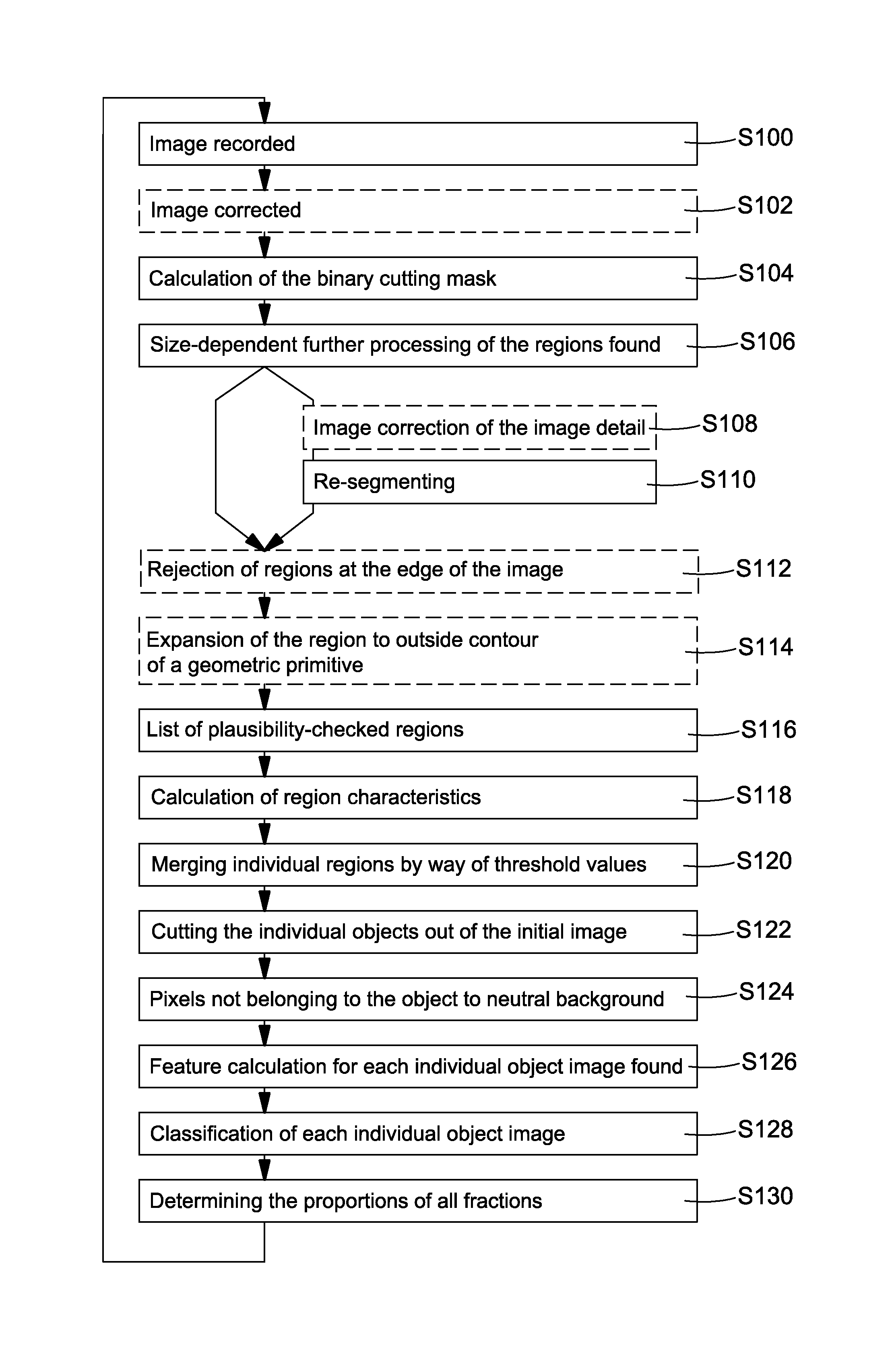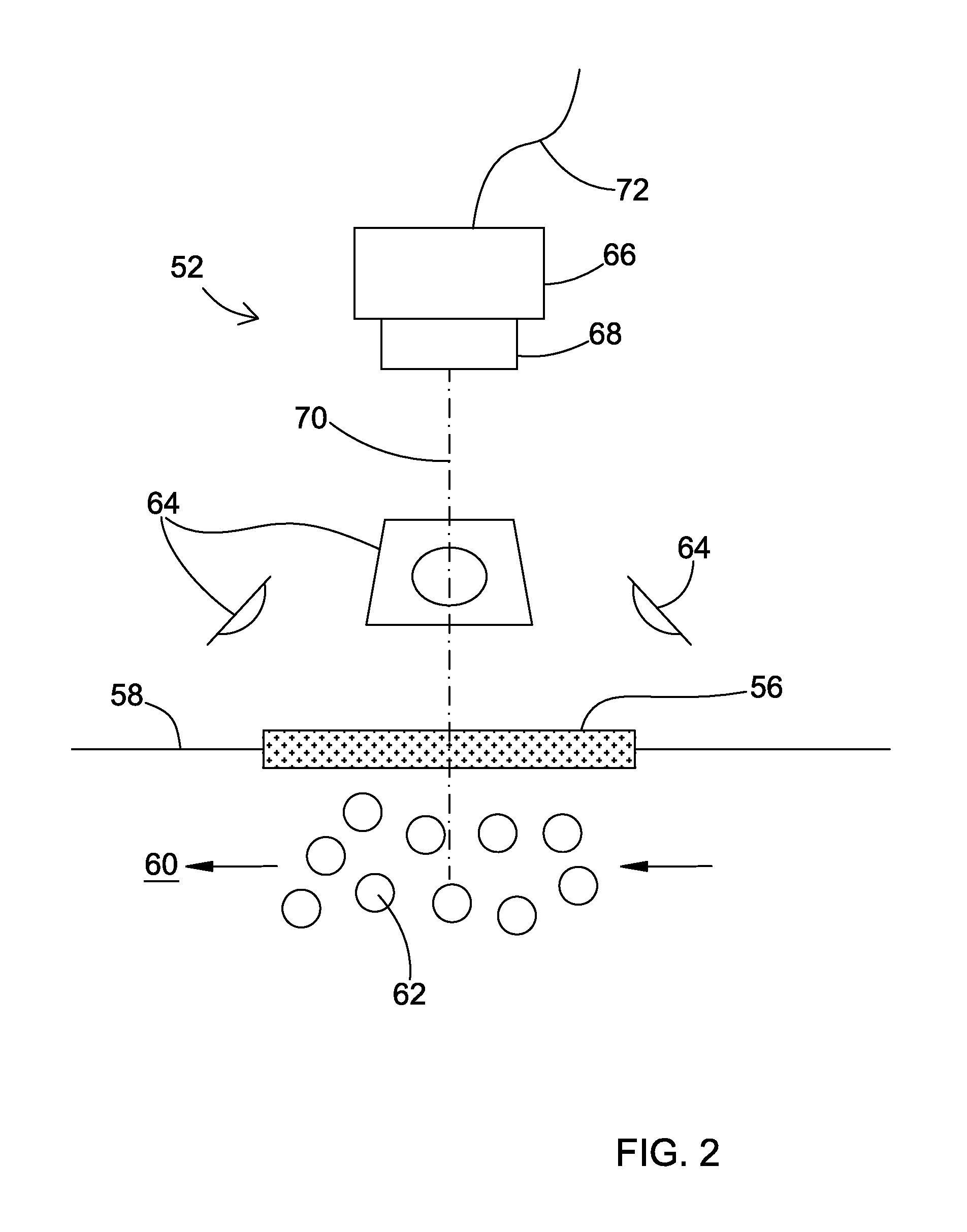Method and apparatus for the optical evaluation of harvested crop in a harvesting machine
a harvesting machine and optical evaluation technology, applied in the field of optical evaluation of harvested crops, can solve the problems of reducing the speed of the threshing drum, unable to avoid inaccuracy, and enlarge the threshing gap
- Summary
- Abstract
- Description
- Claims
- Application Information
AI Technical Summary
Benefits of technology
Problems solved by technology
Method used
Image
Examples
Embodiment Construction
[0024]Reference is now made to FIG. 1 which shows an agricultural harvesting machine in the form of a combine-harvester 10, which includes a main frame 12 with driven front and steerable rear wheels 14 in contact with the ground, which wheels support the main frame 12 for forward movement over a field to be harvested. Although wheels 14 are shown, the combine-harvester 10 can be supported completely or in part by caterpillar running gear which is in contact with the ground. The drive of the front wheels 14 is effected by means of a conventional hydrostatic transmission from a combustion engine fastened on the main frame. Directional specifications (such as forward) below relate to the forward direction of the combine-harvester 10, which moves to the right in FIG. 1.
[0025]A vertically adjustable harvest attachment in the form of cutting gear 16 is used in order to harvest crop and supply it to a slope conveyor 18. The slope conveyor 18 is pivotably mounted on the main frame 12 and in...
PUM
| Property | Measurement | Unit |
|---|---|---|
| optical evaluation | aaaaa | aaaaa |
| electronic image processing | aaaaa | aaaaa |
| size | aaaaa | aaaaa |
Abstract
Description
Claims
Application Information
 Login to View More
Login to View More - R&D
- Intellectual Property
- Life Sciences
- Materials
- Tech Scout
- Unparalleled Data Quality
- Higher Quality Content
- 60% Fewer Hallucinations
Browse by: Latest US Patents, China's latest patents, Technical Efficacy Thesaurus, Application Domain, Technology Topic, Popular Technical Reports.
© 2025 PatSnap. All rights reserved.Legal|Privacy policy|Modern Slavery Act Transparency Statement|Sitemap|About US| Contact US: help@patsnap.com



